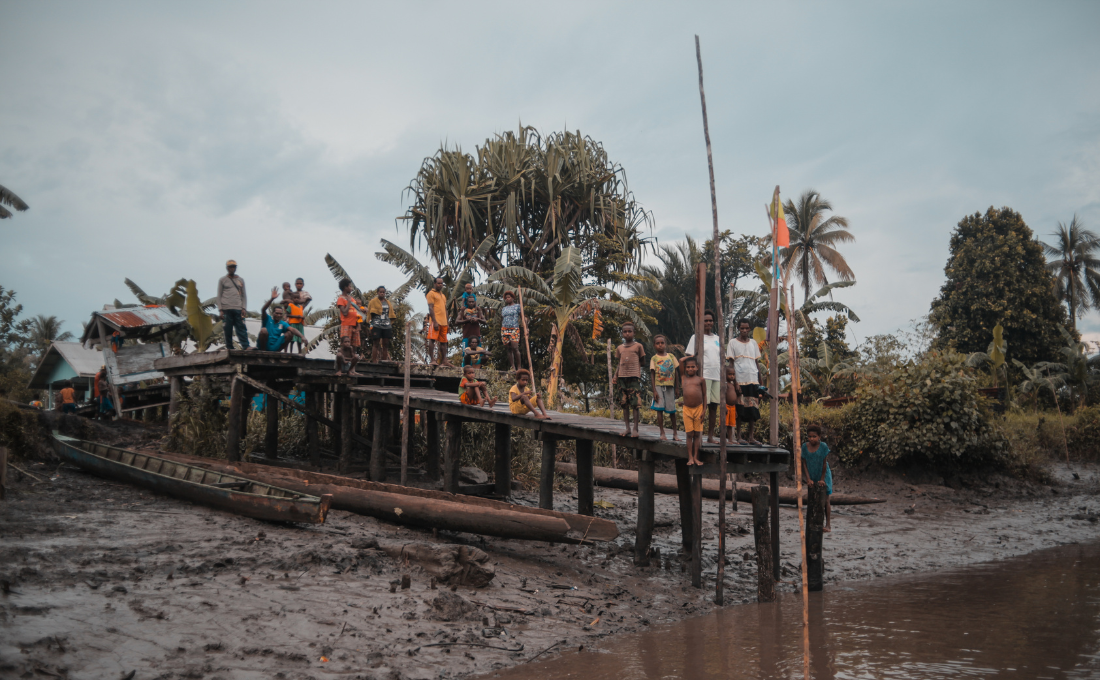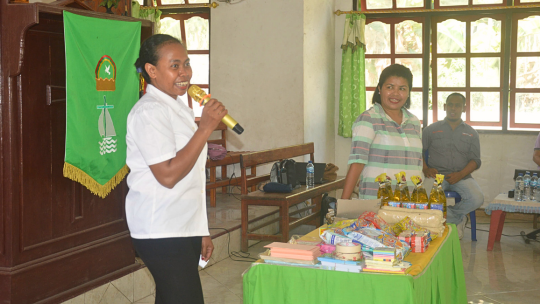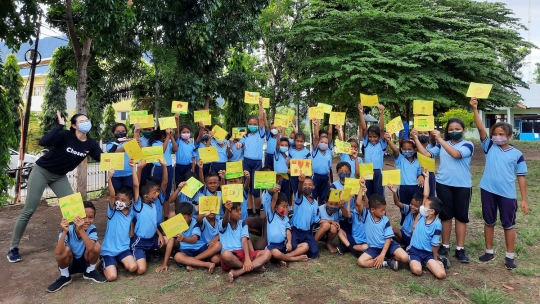Getting to Know the Asmat Tribe from the Underdeveloped Region of Papua

Did you know Indonesia has approximately 1,340 ethnic groups spread across the archipelago, one of which is the Asmat tribe. The Asmat tribe originates from Papua, known for its rich and unique culture. They are famous for their distinctive wood carvings, often depicting their ancestors and spiritual elements. Wood carving art is a manifestation of the Asmat's rituals to honor the spirits of their ancestors.
What Can We Learn from the Asmat Way of Life?
The Asmat people believe they are part of nature, which is why they respect and care for their environment. In fact, the trees surrounding their homes are considered representations of themselves. The tree trunk symbolizes their arms, the fruit represents their heads, and the roots symbolize their feet.
Getting to Know the Asmat More Deeply
The uniqueness of the Asmat tribe stems from their carvings. The Asmat region borders Jayawijaya and Yahukimo Regency to the north, Mappi and the Arafura Sea to the south, Mimika and the Arafura Sea to the west, and Boven Digoel and Mappi Regency to the east.
The Asmat tribe comes from a different area than others in Papua. The foothills of Jayawijaya Mountains seem to shield several areas that used to be part of Merauke Regency. On the other hand, the Arafura Sea stretches along the Asmat coast. All these areas are covered by lush tropical rainforests.
Due to its proximity to the Arafura Sea and being surrounded by the Jayawijaya mountain range, Asmat Regency can only be accessed by air and sea. The fastest way to reach Asmat is by plane, with flights heavily dependent on weather conditions. There are no land access routes connecting one regency to another within Asmat.
The local community often uses watercraft like speedboats or longboats with engines for transportation. Some locals still paddle traditional wooden canoes called "kole-kole" to travel from one village to another or to forage for sago or agarwood in the forest.
Various Issues in Asmat
Behind its uniqueness and wealth, Asmat is often recognized as one of the regions lagging in development, especially concerning children’s issues. Asmat requires full attention, particularly in the eastern regions classified as remote, underdeveloped, and isolated.
Several problems faced by the Asmat tribe arise from various factors, reflected in low human development indices, high rates of child malnutrition, and significant educational gaps for children.
Ongoing Malnutrition Crisis
When the health crisis of malnutrition and measles in Asmat gained media attention, the region's geographic characteristics, dominated by swampy lands and rivers, were identified as a primary cause of this health crisis.
Malnutrition is an imbalance in food intake, occurring when a person consumes too much or too little food or essential nutrients. A malnourished individual may lack vitamins, minerals, and other essential substances needed for bodily functions.
People may become malnourished if they do not eat enough nutritious food overall. However, individuals who consume a lot of food but lack variety in their diet can also experience malnutrition. Malnutrition can lead to short-term and long-term health issues, slow recovery from injuries and illnesses, and a higher risk of infections.
Chronic malnutrition brings a double burden by reducing community productivity and increasing the risk of non-communicable diseases, such as heart disease and diabetes, in later life. Rising malnutrition levels imply a growing inequality among the Indonesian population.
Research indicates that cognitive development is restricted by chronic malnutrition, affecting children’s academic performance by lowering IQ scores by five to eleven points. Later in life, diminished cognitive skills translate to lower income.
The impact is felt not only by individuals but also by the economy. Indonesia has a young population, with about half of its citizens under thirty. This means Indonesia has significant potential in its workforce; however, unfortunately, children in Asmat are falling behind due to the unresolved malnutrition issues.
Currently, malnutrition in Asmat stems from poverty, significantly contributing to the nutritional crisis, along with inadequate knowledge and practices regarding child-rearing and nutrition.
How is Community Access to Healthcare?
Asmat Regency, located in Papua, consists of nine districts with over 100 villages. The area of Asmat Regency itself spans 29,000 square kilometers, about 48 times the size of Jakarta.
As previously mentioned, one major issue faced by the Asmat community is the challenging geographic conditions that make access to medical facilities difficult, requiring the use of sea and river routes. Most Asmat residents live in houses built above swampy areas, and during high tides, waste can be washed in, making access to clean water and electricity very challenging. Additionally, healthcare infrastructure in Asmat is inadequate.
What Are Solutions for Malnutrition in Asmat?
While the number of children treated for malnutrition and other life-threatening forms of malnutrition has increased in recent years, only one in three severely malnourished children can access timely treatment and care needed for survival and development.
In many countries, the prevention and management of malnutrition are often deprioritized, lacking resources and accessibility, particularly for the most vulnerable families and communities, such as the children of the Asmat tribe.
When efforts to prevent malnutrition fail, early detection and treatment of malnourished children are crucial for saving their lives and putting them on a path to healthy growth and development.
In most cases, underweight children can be treated with ready-to-use therapeutic food (RUTF), allowing them to recover at home and within their communities rather than in healthcare facilities. Care services should be funded by the government and primarily managed by the national health system rather than humanitarian workers.
World Vision Indonesia supports the government in improving and addressing the health of children suffering from malnutrition in Asmat, both in healthcare facilities and communities.
Help children in Asmat combat their challenges and achieve a better life with World Vision Indonesia. Visit our website for more detailed information at https://wahanavisi.org/



